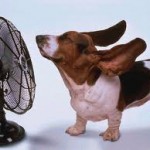[frame align=”right”]
 [/frame]Conservation is most critical during the summer months, when air conditioners make heavy demands on our power supplies. The easiest way to keep your home cool is not to let it heat up in the first place. So you want good insulation, caulking and weather stripping. Shade trees, overhangs and awnings help, too. Beyond that:
[/frame]Conservation is most critical during the summer months, when air conditioners make heavy demands on our power supplies. The easiest way to keep your home cool is not to let it heat up in the first place. So you want good insulation, caulking and weather stripping. Shade trees, overhangs and awnings help, too. Beyond that:
- Keep windows closed during the heat of the day, and draw blinds and draperies to keep the heat out.
- Set the thermostat at 78 degrees or higher. You’ll gain savings of about 5 to 10 percent on the operating cost of an air conditioner for every two degrees of cooling you’re willing to give up.
- Change the filter regularly. An air conditioning unit with dirty filters can use 5 to 10 percent more energy.
- Use fans instead of the central air conditioning unit whenever possible. Individual fans cost about 90 percent less to operate.
- Adjust ceiling fans to turn counter-clockwise in the summer. (Usually this means that the switch on the fan should be in the “down” position.)
- Turn off unnecessary lights.
- Lay off appliances during hot afternoons and evenings. Many appliances create heat and moisture, making the air conditioner work harder. Limit use of ranges and stoves, dishwashers, dryers, washing machines, and other heat-producing equipment to early morning or late evening when temperatures are cooler.
- Rig a clothesline in the yard and give your dryer a break.
- Prepare cold meals such as salads and sandwiches. Cook hot meals only late in the evening, when it’s cooler.
- If you have a refrigerator or freezer in your garage that isn’t full, consider getting rid of it. These appliances tend to be older and hog energy.